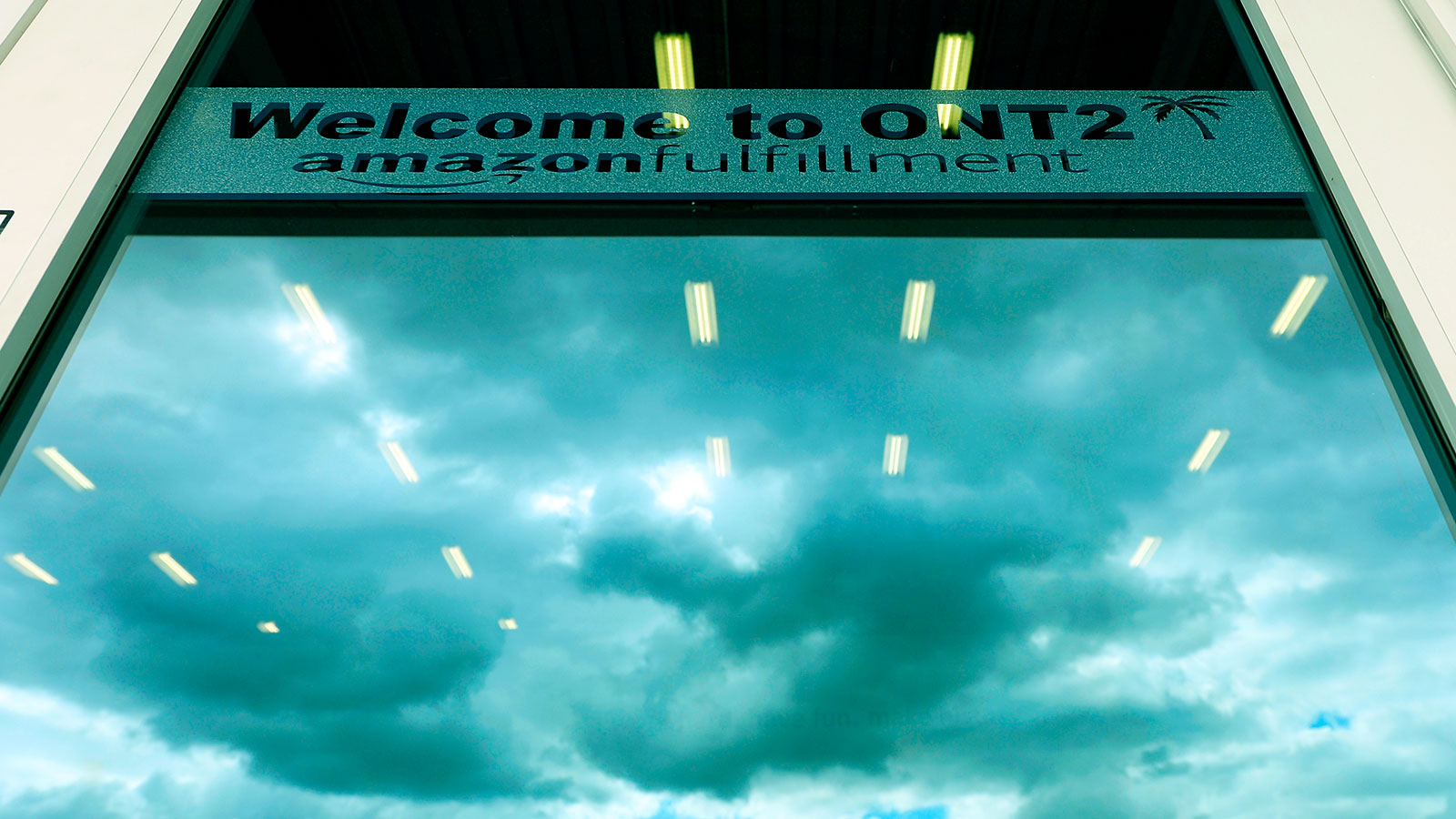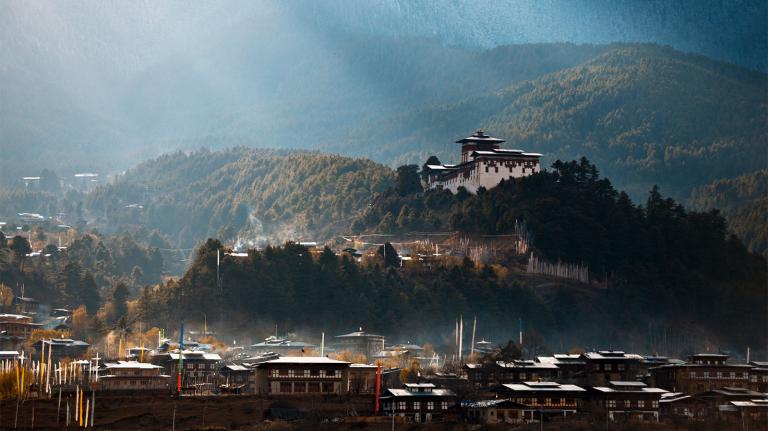Earlier this week, Amazon announced that it will hire 100,000 warehouse and delivery workers across the country to handle the online shopping surge caused by the COVID-19 outbreak. This may be welcome news for those facing job losses and customers hoping for speedier deliveries of essential goods. But some in California’s Inland Empire — a warehouse and logistics hub where Amazon expects to add about 4,000 of those jobs — are concerned that vulnerable communities in their neighborhoods will suffer as the industry executes a massive speedup.
The sprawling region east of Los Angeles, which includes San Bernardino and Riverside counties, is ranked the worst in the nation for ozone pollution and is also plagued by some of the highest poverty rates, as well as high childhood asthma rates. As the number of people diagnosed with COVID-19 in the region begins to climb, these conditions will almost surely make the Inland Empire’s outbreak exceptionally deadly — as they are poised to in every community facing environmental injustice. The emissions that will likely come with Amazon’s expansion have the potential to exacerbate this already-lethal combination.
“We know that once [the novel coronavirus] does take hold here, it has the potential to be really, really bad — and that’s because the truth is the damage has already been done in our communities, when it comes to making people’s immune systems weaker, making their health weaker,” said Anthony Victoria Midence, communications director at the Center for Community Action and Environmental Justice (CCAEJ), an organization that is now focused on monitoring especially vulnerable residents, especially those who have lung cancer, asthma, or chronic obstructive pulmonary disease.
“We’re talking about people who are living paycheck to paycheck, who live next to a rail yard or next to a warehouse, who live in extremely dangerous neighborhoods,” said Victoria Midence. “With all that uncertainty, with the added impact [of pollution] — it creates a living environment that is extremely unhealthy in every aspect you can think of.”
Andres Garcia, a former Amazon warehouse worker who grew up in San Bernardino, lives with that uncertainty every day.
Six years ago, Garcia was one of those workers racing to fill orders in a San Bernardino Amazon fulfillment center, a temporary and seasonal job that he described as stressful and grueling, because workers are desperately trying to meet work quotas. Garcia never saw a future for himself there, but the experience opened his eyes to the perils of the business, both inside and outside the warehouse.
Garcia, who was born with asthma and raised first near the traffic-clogged 210 freeway and then next to the San Bernardino International Airport, is acutely sensitive to the perils of industrial pollution. He has neighbors and friends with respiratory illnesses. His school-age nieces and nephews can’t play outdoors at recess when the air quality is poor. But what leaves Garcia most anxiety-ridden is his 62-year-old father’s worsening asthma, which leads to coughing fits that leave his father unable to breathe.
“It was disturbing to have to witness that happening because it was like nothing could help,” said Garcia, who now lives in nearby Rancho Cucamonga but visits his parents in their San Bernardino home several times a week.
Now, he said he’s braced himself for the worst: the possibility that his father may die young due to his health ailments — or to the novel coronavirus.
Last year, Garcia decided to do what he could to help make the neighborhoods in his hometown safer. He joined CCAEJ and began attending community events, educating fellow residents, and protesting a proposed airport logistics center that, according to an environmental assessment, would generate one ton of toxic air pollution daily. (Amazon is rumored to be the proposed terminal’s tenant.)

Andres Garcia (far left) protests the proposed air cargo facility at the San Bernardino International Airport on January 22, 2020. San Bernardino Airport Communities
On Wednesday, members of the coalition filed for an injunction to halt construction of the air cargo facility. Garcia provided a declaration as part of that legal effort. What pains him the most, he told Grist, is that the adverse health effects on residents near the airport could have been avoided with better land use planning.
“I like to think of myself as fearless about it, but at the same time it haunts me to think that there’s a reason why the air is so bad in my childhood home and my childhood neighborhood,” said Garcia.
As Amazon prepares to add staff and increase activity across the country and in the Inland Empire, Garcia says the company can take steps to mitigate issues like pollution and protect the health and well-being of workers. For example, the coalition challenging the airport expansion has argued that it should go forward only on the condition that Amazon agrees to a guaranteed set of benefits and working conditions for employees as well as a requirement that it use zero-emission electric trucks.
Worker protections will be even more important if COVID-19 spreads within Amazon’s warehouses. On Thursday, the company announced that a worker at the company’s delivery station in New York City tested positive for the novel coronavirus — the first such case for an Amazon warehouse worker based in the U.S. An Amazon spokesperson told Grist that its employees have access to both paid and unpaid time-off benefits if they are unable to work, and those diagnosed with COVID-19 or placed into quarantine receive up to two weeks of pay. Hourly employees have unlimited unpaid time off through the end of March, according to Amazon.
“The health and safety of our employees and contractors around the world continues to be our top priority,” the spokesperson wrote in an email. “As communities around the world are requiring social distancing, we’re seeing that our teams — much like grocery stores, pharmacies and other essential services — have a unique role getting customers the critical items they need and this is especially vital for the elderly, people with underlying health issues, and those sick or quarantined.”
Ultimately, residents in communities like San Bernardino hope to strike a balance, welcoming economic development while at the same time protecting the environment and people’s health, said CCAEJ’s Victoria Midence.
“We’re asking for solutions that will be more sustainable in the long term,” he said. “That’s what it comes down to at the end of the day. We need sustainability plans, sustainability goals — and we need sustainability practices that are going to take everyone into account and prioritize the health of those who need it the most.”




